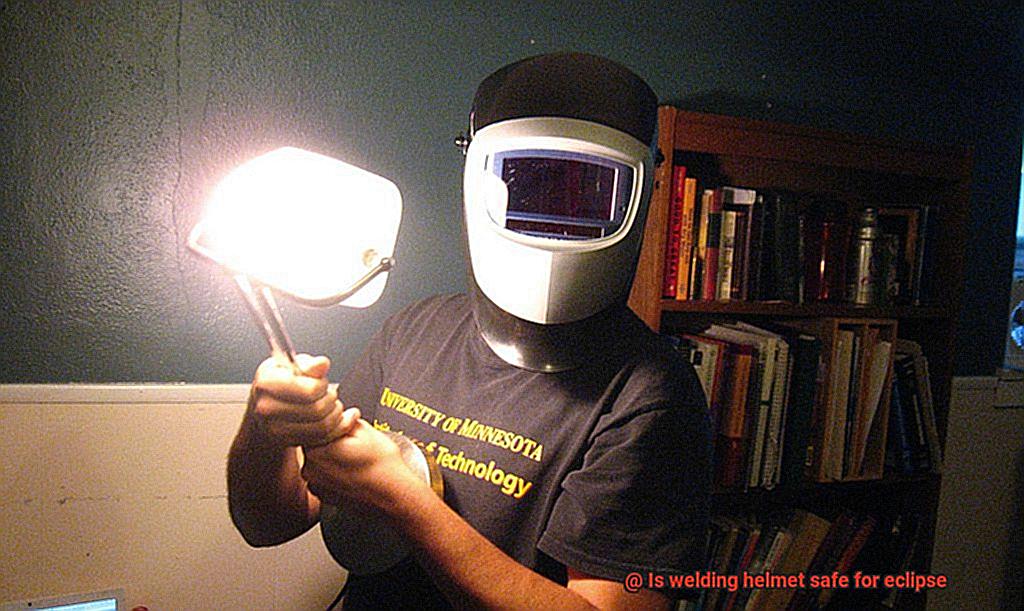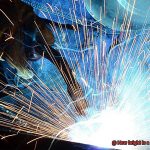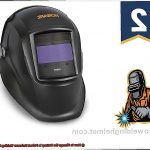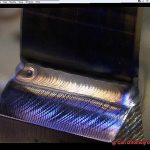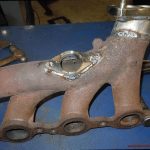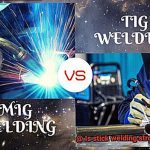Are you wondering if it’s safe to use a welding helmet to watch a solar eclipse? The short answer is yes – with a few caveats.
Welding helmets are designed to shield the eyes from bright light and can be used to observe an eclipse safely. However, there are some important things to consider before using one for this purpose.
First, welding helmets are meant to block ultraviolet (UV) radiation, not visible light. This means that even when wearing a welding helmet, you should never look directly at the sun during an eclipse without additional shields such as special-purpose solar filters or eclipse glasses.
Second, it’s essential to choose a helmet with the right amount of protection for your needs. Most welding helmets have shade levels ranging from 9-13 which shields against UV light but not direct sunlight. For optimal coverage during an eclipse, you’ll need a helmet with at least shade level 14 or higher.
Third, make sure that your helmet fits properly and securely on your head so no light can penetrate the lens or visor’s edges. A poorly fitting helmet could cause serious damage to your eyes and allow some of the sun’s rays to reach them.
In conclusion, although welding helmets can be used safely for watching a solar eclipse if they meet certain criteria, it’s important to note that they do not provide complete coverage against UV radiation and direct sunlight. When viewing an eclipse with a welding helmet, it’s best to use additional security equipment such as special-purpose solar filters or eclipse glasses for added safety.
Can You See Through a Welding Helmet?
Contents
- 1 Can You See Through a Welding Helmet?
- 2 Factors to Consider When Using a Welding Helmet for Solar Eclipse Viewing
- 3 Lens Shade, Age, and Quality of the Welding Helmet
- 4 Are There Better Options Available for Solar Eclipse Viewing?
- 5 The Benefits of Eclipse Glasses or Specialized Solar Filters
- 6 How to Use Eclipse Glasses or Specialized Solar Filters Properly
- 7 Tips for Protecting Your Eyes During a Solar Eclipse
- 8 Conclusion
The answer is yes, but the level of visibility depends on the type of helmet being used. Traditional welding helmets feature a tinted lens that allows welders to view their workpiece while protecting their eyes from the intense light of the welding arc. The degree of tint can range from lighter tints for greater visibility to darker tints for higher levels of protection.
More modern welding helmets use auto-darkening technology, which adjusts the lens’ tint level depending on the brightness of the welding arc. This provides enhanced visibility for welders and helps reduce eye strain and fatigue.
However, when it comes to viewing solar eclipses, welding helmets may not offer sufficient protection. Although they do have some UV protection, they may not filter out enough harmful rays to prevent eye damage.
Welding goggles with a higher level of tint may provide better coverage, but it is still recommended to use specialized solar eclipse glasses designed specifically to block harmful UV rays for safe viewing.
Factors to Consider When Using a Welding Helmet for Solar Eclipse Viewing
Witnessing a solar eclipse is an awe-inspiring experience, but it can also be potentially damaging to the eyes. Fortunately, welding helmets can provide protection when viewing a solar eclipse, but there are several key factors to consider before using one.
The shade level of a welding helmet is an essential factor when selecting one for eclipse viewing. The shade level determines how much light the helmet filters out; for solar eclipses, the recommended shade level is at least 12 or higher. To ensure adequate protection for your eyes, it is imperative that the helmet meets or exceeds this recommendation.
In addition to shade level, the quality of the welding helmet must also be considered. Lower-quality helmets may not provide sufficient coverage and should be avoided. Opt for a helmet that has been specifically designed for solar eclipse viewing and meets all necessary standards. Comfort and fit are also important factors; choose a helmet that fits comfortably and securely for extended use during an eclipse.
For those looking for an inexpensive option, welding goggles or specially made solar eclipse glasses may be viable alternatives that still offer enough protection for your eyes.
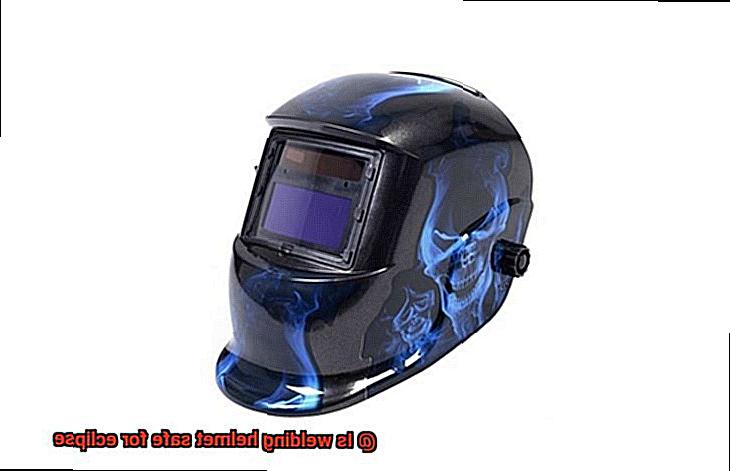
However, whatever you choose must comply with safety regulations and should be maintained regularly with proper care and cleaning in order to ensure optimal protection.
Lens Shade, Age, and Quality of the Welding Helmet
When it comes to protecting your eyes during a solar eclipse, the lens shade, age and quality of a welding helmet are essential factors to consider. A welding helmet with a shade of 12 or higher is recommended for viewing, as it will provide adequate protection from the intense sunlight. Additionally, it is important to check the lens for cracks or damage as this can reduce its effectiveness in filtering out UV and IR rays.
The age of the helmet should also be taken into account; helmets older than three years may not offer sufficient protection and should be replaced.
Goggles can also be used for eclipse viewing, but they must have a lens shade of 12 or higher and be specifically designed for solar eclipse viewing. Regular sunglasses should not be used as they do not provide enough protection from the sun’s damaging rays.
It is important to note that welding helmets and goggles do not charge from solar energy as they do not have solar-powered lenses; their lens shade is achieved through a combination of filters and coatings on the lens which do not require an external power source.
Are There Better Options Available for Solar Eclipse Viewing?
When it comes to viewing a solar eclipse, safety should always be the top priority. While welding helmets can provide some level of protection, there are better options available to ensure your eyes stay protected.
Eclipse glasses and solar filters are specifically designed for this purpose and offer superior clarity and protection from the sun’s harmful rays.
Eclipse glasses are the most popular choice for safe viewing. These special glasses feature filters that block out visible light and all UV and infrared radiation. They can be easily purchased online or at local retailers, making them a convenient option.
Solar filters, on the other hand, can be attached to a camera lens or telescope for magnified views of the eclipse.
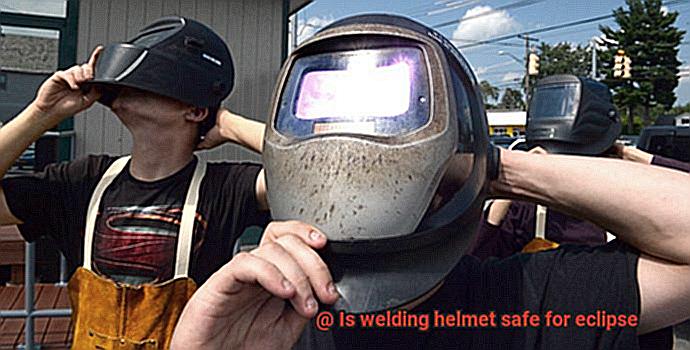
These come in various colors, glass, or metal coatings and should not be confused with regular sunglasses or homemade filters which offer no protection from the sun’s rays.
The Benefits of Eclipse Glasses or Specialized Solar Filters
When it comes to viewing a solar eclipse, specialized solar filters and eclipse glasses are the only reliable way to protect your eyes. These specially-designed accessories are made from black polymer or Mylar material that blocks out up to 99.9% of visible light, as well as harmful ultraviolet and infrared radiation.
Furthermore, they have been certified to meet ISO 12312-2 international safety standards, so you can trust them with your vision.
Specialized solar filters are also a great option for getting a closer look at the eclipse. They fit over telescopes, binoculars and camera lenses, allowing you to magnify the sun’s image for a more detailed view.
On the other hand, welding helmets or goggles are not suitable for viewing a solar eclipse.
The #12 or #14 shade filter that comes with welding helmets is strong enough for welding but not strong enough to protect against the sun’s harmful radiation during an eclipse.
How to Use Eclipse Glasses or Specialized Solar Filters Properly
While some may think that welding helmets and goggles are suitable alternatives, they are not safe for viewing the sun or an eclipse. Certified eclipse glasses or specialized solar filters are the only way to safely view a solar eclipse.
Using a welding helmet during a solar eclipse may seem like a good idea as they are designed to protect your eyes from intense brightness and harmful radiation.
However, not all welding helmets are suitable for viewing the sun or an eclipse, as they are not certified safe for direct solar viewing. If you attempt to use one of these helmets to view the sun, you may still be able to see it, but you will also be exposing yourself to dangerous levels of UV radiation which can cause permanent damage to your eyesight.
On the other hand, specialized solar filters and eclipse glasses have been specifically designed for this purpose. They contain lenses made up of special materials that block out almost all of the sun’s harmful rays including UV and infrared radiation.
These filters meet international safety standards and provide adequate protection for your eyes when viewing an eclipse or even just the sun in general.
It is important to use these filters or glasses correctly when viewing an eclipse; eye protection should be worn at all times from beginning to end of the partial phases of an eclipse.
Regular sunglasses, smoked glass, unfiltered telescopes, cameras or films do not provide enough protection against the sun’s damaging rays and should never be used instead of certified eye protection when looking directly at the sun during an eclipse or otherwise.
Tips for Protecting Your Eyes During a Solar Eclipse
A solar eclipse is a breathtaking event, and many people may be tempted to view it without taking the necessary precautions. When it comes to protecting your eyes during an eclipse, welding helmets may have come to mind. Are welding helmets safe for viewing the sun during an eclipse?
The answer is yes, but with certain conditions. Welding helmets are designed to block out UV and IR radiation, making them a suitable option for shielding your eyes from the sun’s potentially damaging rays during an eclipse.
However, not all welding helmets are created equal; only those with shade 12 or higher lenses should be used for viewing the sun during an eclipse. Furthermore, it is important to make sure that the helmet is specifically designed for solar use; welding helmets may have lenses that block UV and IR radiation, but they may not be able to filter out the specific wavelengths of light emitted during an eclipse.
In addition, welding helmets should not be used for extended periods of time when viewing the sun. They can be effective in short bursts, but prolonged use could lead to eye damage. And unfortunately, welding goggles are not recommended for use during a solar eclipse; although they do provide some protection from the sun’s rays, they are not designed for looking directly at the sun and do not provide adequate coverage.
Therefore, if you’re planning on viewing a solar eclipse without special equipment such as eclipse glasses or solar filters, make sure you take all necessary precautions by using a welding helmet that meets certain requirements such as lens shade and age..
Conclusion
Witnessing a solar eclipse is an awe-inspiring experience, but it can also be potentially hazardous to the eyes. Fortunately, welding helmets can offer some protection when viewing a solar eclipse, but there are several key factors to take into account before using one.
For starters, the helmet’s shade level should be at least 12 or higher and must be specifically designed for solar use. Although welding goggles with a darker tint may provide greater coverage, it is still recommended to wear specialized solar filters or eclipse glasses for added safety and clarity.
When it comes to shielding your eyes during an eclipse, welding helmets may seem like a safe option; however, not all welding helmets are created equal. Only those with shade 12 or higher lenses can be used to view the sun during an eclipse and they should not be used for extended periods of time as this could result in eye damage.
Specialized solar filters and eclipse glasses are the best way to ensure your eyes are protected when viewing a solar eclipse, as they have been developed to meet ISO 12312-2 international safety requirements and block out up to 99 percent of visible light along with harmful ultraviolet and infrared radiation.
